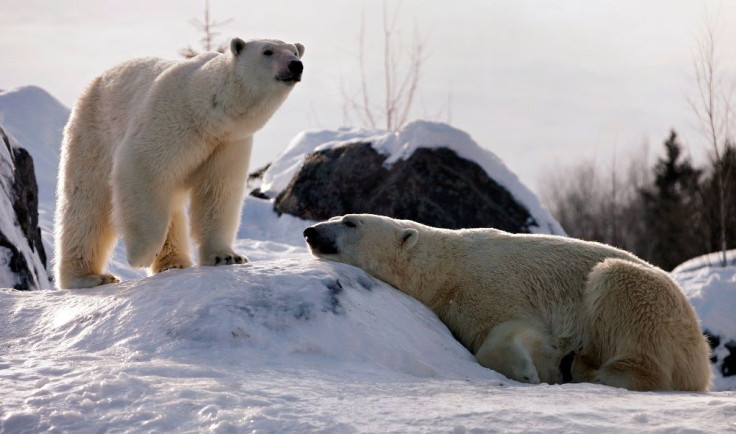Polar Bears’ Survival Is Threatened By More Than Just Global Warming, Study Says

The threat to the polar bear’s population continues on, with more than just the concern on habitat loss. A Norwegian study has found that organic pollutants have an effect on the animal’s endocrine systems, adding threat to its survival.
The conclusion of a new study by researchers from the Norwegian University of Science and Technology in Trondheim, led by Kristin Møller, states that environmental pollution coming from pesticides and industrial wastes is a contributor to the thyroid problem found among polar bears.
Scientists have examined organs, specifically muscle, liver and kidney tissues from dead polar bears killed by Inuit hunters in 2011. The study’s aim was to see how organohalogen compounds affect the species’ thyroid systems, which are important in physiological functions such as reproduction, growth and development, thermoregulation and metabolism, among others.
The researchers have found high levels of pesticide residue and plastic pollution upon tissue examination, which have a great effect on the animal’s hormonal systems. “The health of the Arctic polar bear is being attacked from all fronts, but among many other factors is the exposure to environmental contaminants,” said one of the authors, Maria Jesus Obregon, in a report by The Ecologist.
In a separate report from the ScienceNordic, it was also stated how chemicals have affected the bear’s reproductive activities, causing the polar bears’ penises to break easily due to erosion of its penile bone. This could really affect reproduction of the species.
Polar bears are already facing a great threat to their survival owing to the current climate change. The Artic mammal depends highly on ice to have access to its prey, the seals. However, ice is slowly melting due to global warming, mostly fuelled by human activities. Now, threats come in different forms, including plastic pollution and industrial wastes which make their way to the bear’s food chain.
Climate change and pollution are a deadly combination for polar bears. However, according to The Ecologist report, a second team of researchers has created conservation guidelines and proposed measures to help save the polar bear from becoming extinct.
To report problems or leave feedback on this article, email: wendylemeric@gmail.com.






